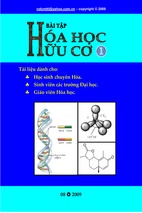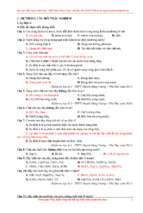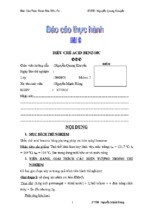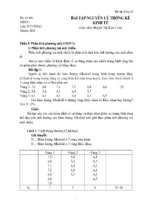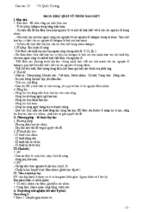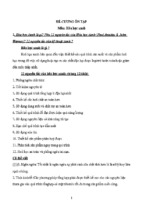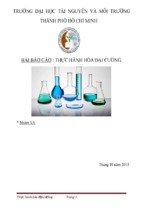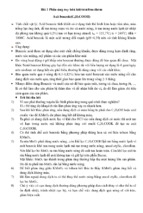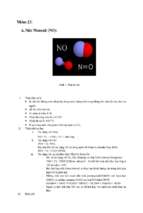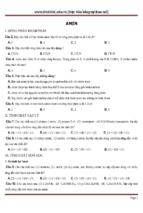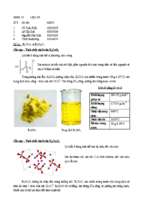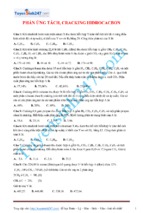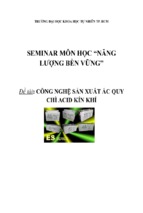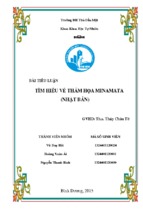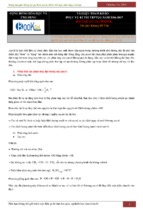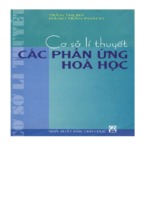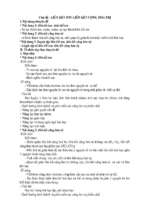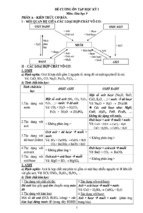Mô tả:
chỉ số axit Acid Number
chỉ số xà phòng Saponification Number
chỉ số este Ester Value
chỉ số iot Iodine Value
chỉ só peoxit
vai trò của các chỉ số đánh giá lipit
ANALYTICAL METHODS TO MEASURE THE CONSTANTS OF FATS
AND OILS
[1] Acid value (Acid Number)
The acid value (AV) is the number that expresses, in milligrams the quantity of potassium
hydroxide required to neutralize the free acids present in 1 g of the substance. The acid value
may be overestimated if other acid components are present in the system, e.g. amino acids or
acid phosphates. The acid value is often a good measure of the break down of the triacylglycrols
into free fatty acids, which has an adverse effect on the quality of many lipids.
Significance
Acid value is the measure of hydrolytic rancidity. In general, it gives an indication about edibility
of the lipid.
- Edible oil contain > 1%
- Pharmaceutical oil must not have any acidity.
AV =
ml of KOH x N x 56
= mg of KOH
Weight of Sample
N = Normality of KOH
% Free Fatty Acid (FFA) = AV x 0.503
Material
Fat or Oil
Absolute ethanol alcohol
Phenolphthalein
0.1 N KOH
Procedure
1. Place 5.0 g of fat or oil in a dried conical flask.
2. Add 25 ml of absolute ethanol alcohol and add ( 2-3) drops of phenolphthalein
3. Heat with shaking in water bath (65%) for 10 minutes ,then cool Titrate the solution
against 0.1 N KOH until pink color appears (end point).
4. Record your observations.
5. Calculate the acid value (AV) and free fatty acid (%FFA) using above laws.
[2] Saponification Number
The saponification value is the number of mg of potassium hydroxide required to neutralize
the free acids and to saponify the esters in 1 g of the substance. The saponification number is a
measure of the average molecular weight of the triacylglycerols in a sample. Saponification is
the process of breaking down a neutral fat into glycerol and fatty acids by treatment with alkali.
The smaller the saponification number the larger the average molecular weight of the
triacylglycerols present i.e. Saponification value is inversely proportional to the mean molecular
weight of fatty acids (or chain length).
H2 C
HC
H2 C
O
O C
O
O C
O
O C
R
R
+
3 KOH
R
H2 C
OH
HC
OH
H2 C
OH
+ 3R
O
C
OK
Saponification Value of Fats and Oils
Fat or oil
Milk fat
Coconut oil
Cotton seed oil
Soybean oil
lard
Butter fat and vegetable fats
Saponification Value
210-233
250-264
189-198
189-195
190-202
∼ 220 – 250
Material
Fat or Oil
0.5 N alcoholic potassium hydroxide ( alcoholic KOH) ( prepared by dissolving 30 g
potassium hydroxide in 20 mL of water and make the final volume to 1 L using 95 %
ethanol. Leave the solution to stand for 24 h before decanting and filtering the solution.
0.5 N Hydrochloric acid
Phenolphthalein.
Procedure
1. Weigh approximately 2 g of the fat or oil into a 250 mL conical flask.
2. Add 25 mL of alcoholic potassium hydroxide solution ( 0.5 N).
3. Attach a reflux condenser and heat the flask contents on a boiling water bath for 1 hour
with occasional shaking.
4. While the solution is still hot , add 3 drops of phenolphthalein indicator and titrate the
excess potassium hydroxide with the 0.5 N hydrochloric acid ( Vml of hydrochloric acid
at end point represents S).
5. Do same above procedure but without sample ( Vml of hydrochloric acid at end point
represents B).
6. calculate the saponification number by using the following law:
B: ml of HCl required by Blank.
56.1(B -S) x N of HCl
SP# =
Gram of Sample
S: ml of HCl required by Sample.
[3] Ester Value
The ester value is defined as the mg of KOH required to react with glycerin (glycerol / or
glycerin) after saponify one gram of fat. It is calculated from the saponification
Value (SV) and the acid Value (AV):
Ester Value (EV) = Saponification Value (SV) – Acid Value (AV)
% glycerin Ester Value 0.054664
[4] Iodine Value (I.V)
The iodine value (IV) gives a measure of the average degree of unsaturation of a lipid: the
higher the iodine value, the greater the number of C=C double bonds. By definition the iodine
value is expressed as the grams of iodine absorbed per 100g of lipid. Iodine value (I.V.) is
directly proportional to the degree of unsaturation (No of double bonds.) and inversely
proportional to the melting point (M.P.) of lipid. An increase in I.V.indicates high susceptibility
of lipid to oxidative rancidity due to high degree of unsaturation.
One of the most commonly used methods for determining the iodine value of lipids is
"Hanus method". The lipid to be analyzed is weighed and dissolved in a suitable organic solvent,
to which a known excess of iodine chloride is added. Some of the IBr reacts with the double
bonds in the unsaturated lipids, while the rest remains:
R-CH=CH-R + IBrexcess R-CHI-CHBr-R + IBrremaining
The amount of IBr that has reacted is determined by measuring the amount of IBr remaining
after the reaction has gone to completion (IBrreacted =IBrexcess - IBrremaining). The amount of IBr
remaining is determined by adding excess potassium iodide to the solution to liberate iodine, and
then titrating with a sodium thiosulfate (Na2S2O3) solution in the presence of starch to determine
the concentration of iodine released:
IBrremaining + 2KI KBr + KI + I2
I2 + starch + 2Na2S2O3 (blue) 2NaI + starch + Na2S4O6 (colorless)
TYPICAL IODINE NUMBERS
Coconut oil
8 - 10
Butter
25 - 40
Beef tallow
30 - 45
Palm oil
37 - 54
Lard
45 - 70
Olive oil
75 - 95
Peanut oil
85 - 100
Cottonseed oil
100 - 117
Corn oil
115 - 130
Fish oils
120 - 180
Soybean oil
125 - 140
Safflower oil
130 - 140
Sunflower oil
130 - 145
Linseed oil
170 - 205
Material
Oil or fat
Hanus solution ( it’s prepared by dissolving 18.2 g of iodine in 1L of glacial acetic acid
and then add 3 ml of bromine water for increasing the halogen content.
15% potassium iodide solution
1% starch solution
0.1 N Sodium thiosulfate solution.
Procedure
1. Weigh approximately 0.25 g of the fat or oil into a 250 mL conical flask.
2. Add 10 ml of chloroform.
3. Add 30 ml of Hanus solution and close the flask completely by Para film, then
leave the solution for 30 minutes with shaking continuously.
4. Add 10 ml of 15% potassium iodide solution and then shake.
5. Add 100 ml of distilled water (DW).
6. Titrate the iodine solution against 0.1 N Sodium thiosulfate solution till yellow
color formed , then add 2-3 drops of starch solution where blue solution formed
and then continue with titration till the blue color is disappeared (Volume (ml) of
Na2S2O3 at end point represents S)
7. Do same above procedure but without sample (Volume (ml) of Na 2S2O3 at end
point represents B).
8. Calculate the iodine number by using the following law:
( B - S ) N of Na2S2O3 0.127g/meq
Iodine Value =
Weight of Sample (g)
B: V ml of Na2S2O3 volume for blank
S: V ml of Na2S2O3 volume for sample
100
- Xem thêm -

